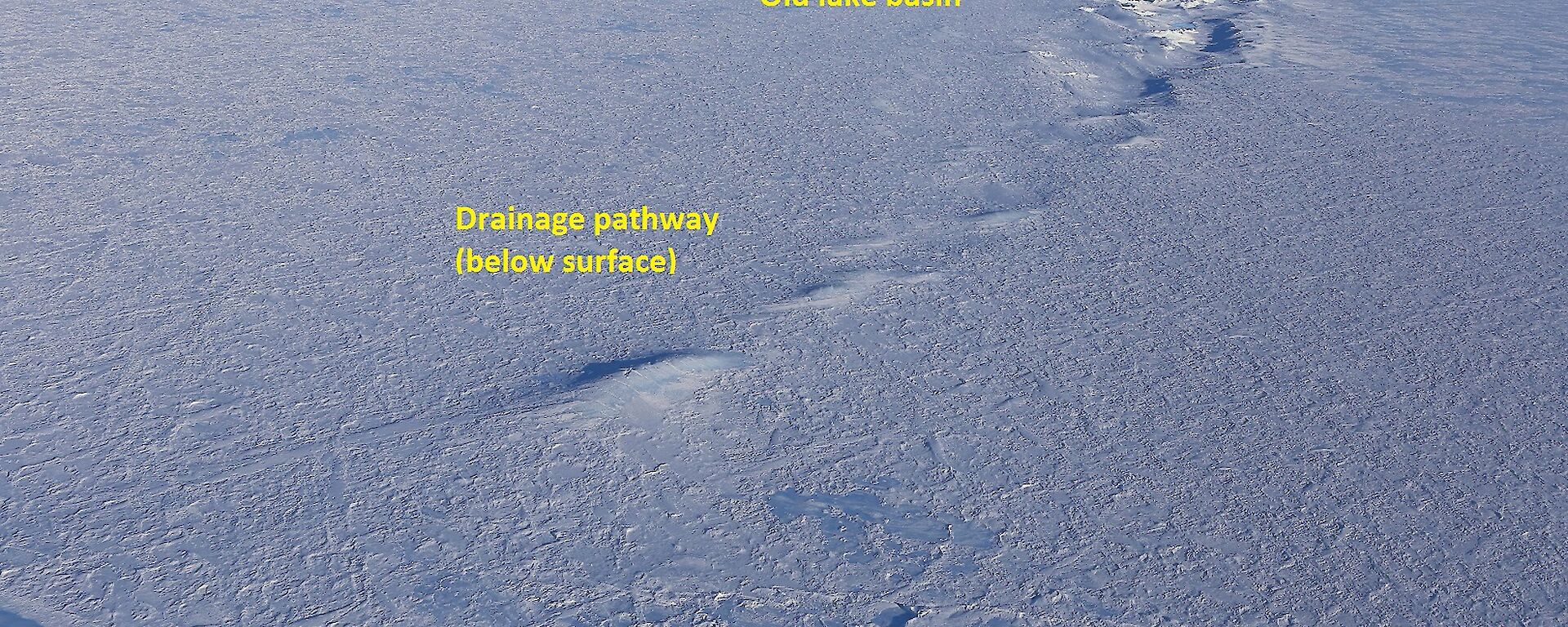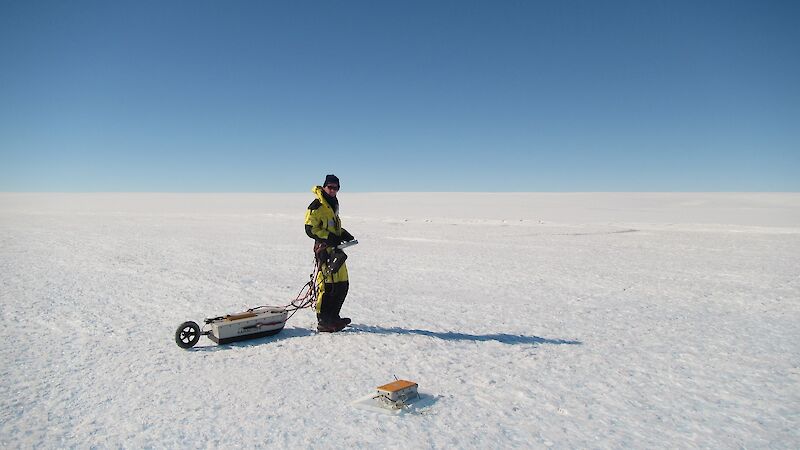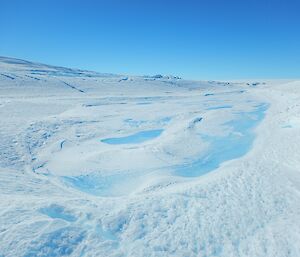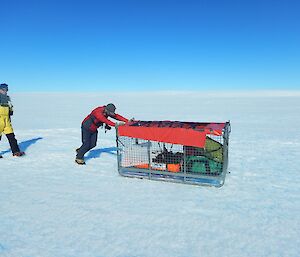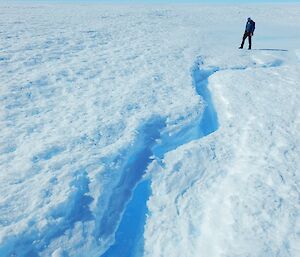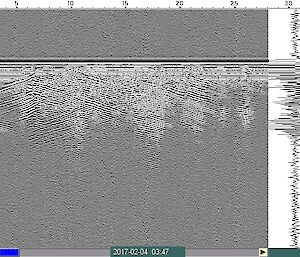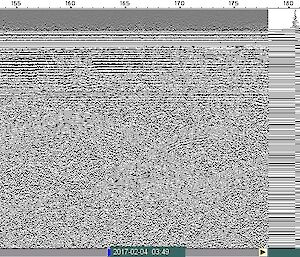25 January — 1 February
It has been a busy week for geophysics on the Sørsdal Glacier. It all began with a seismic survey conducted at the furthest-upstream site on the glacier. After a few seismic surveys with the team under our belt, we've got this process down to a fairly smooth operation. The results look very promising, and with a bit of processing should give us an interesting picture of what lies underneath the ice.
Later in the week we were lucky enough to get two more trips to the glacier — this time to conduct ground-penetrating radar (GPR) surveys across an old lake feature we've been calling the Channel Lake. The lake on this site drained last season, leaving behind a basin on the surface. Interestingly the water didn’t drain directly over the surface, but seems to have travelled underground for a few kilometres before finally reappearing. We're interested in finding out exactly where the water went in between, which is where the GPR comes in.
GPR surveys involve dragging an antenna across the surface in a straight line. This antenna transmits an electromagnetic signal into the ice, which reflects off underground features and returns to the antenna. We get the strongest signal from features with very different materials to the surrounding ice, such as pockets of liquid water or open air. An on-board computer reads the returning signal over a time period of nanoseconds, and then calculates the strength of the signal and how deep it has penetrated.
We used two GPR antennae across the Channel Lake, one transmitting a signal at 250 megahertz (MHz) and the other at 800 MHz. The idea behind using both is that they penetrate to different depths with different resolution. The 250 MHz antenna reaches approximately 60m below surface with a low-resolution return signal, whilst the 800 MHz antenna can only see about 20m below the surface, but with much more detail. Once processed, we hope the data will show some of the channels which drained the lake almost a year ago. A huge thanks to our remarkable field training officers for their help in keeping us running safely and on time during these expeditions, and to Will McAdam who has been immensely helpful in getting the GPR equipment running.
Back at Davis research station, the past week has seen several expeditioners leave the station on a Hercules aircraft. Although we were sorry to see them go, many more expeditioners were welcomed in from the aircraft and the Davis family is now full to capacity. The queue at meal times has grown much longer! With the Aurora Australis fast approaching Antarctica, we are all doing our best to get as much work done as possible, while at the same time taking in the sights and memories which many of us may never experience again.
Tom Schaap

